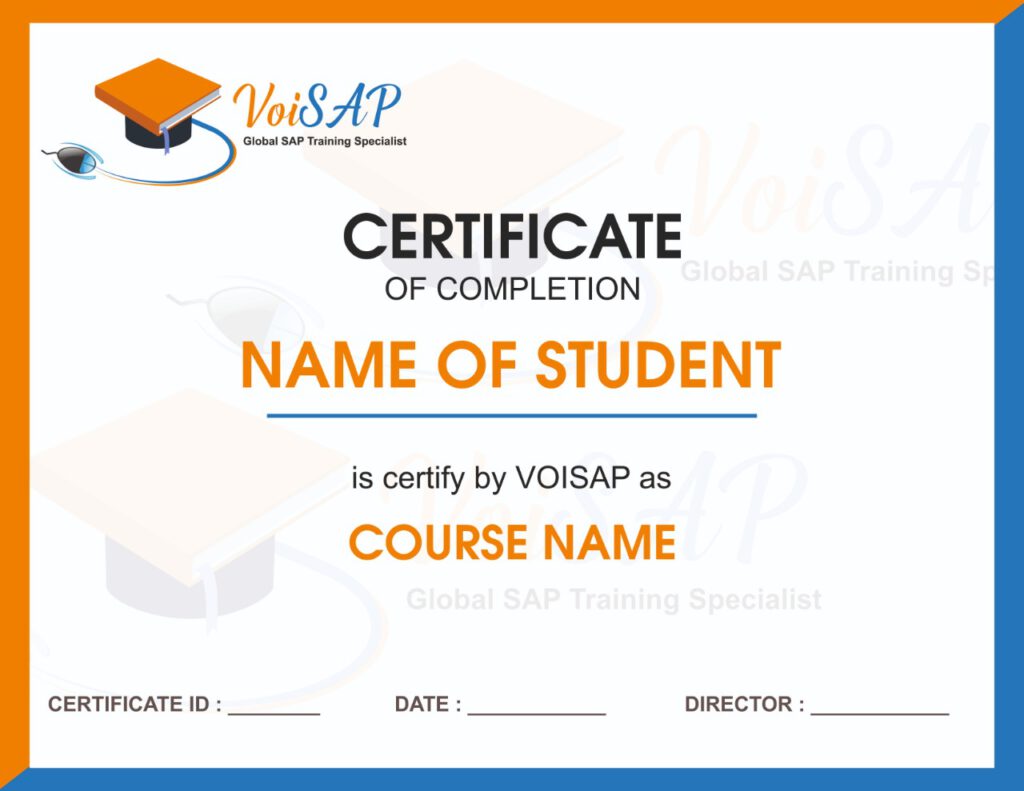Machine Learning Certification Training
Eligibility & Pre-requisites
Eligibility
The Machine Learning certification online course is well-suited for participants at the intermediate level including, analytics managers, business analysts, information architects, developers looking to become data scientists, and graduates seeking a career in Data Science and Machine Learning.Pre-requisites
This Machine Learning course requires an understanding of basic statistics and mathematics at the college level. Familiarity with Python programming is also beneficial. You should understand these fundamental courses including Python for Data Science, Math Refresher, and Statistics Essential for Data Science, before getting into the Machine Learning online course.
Machine Learning Course Overview
This Machine Learning online course offers an in-depth overview of Machine Learning topics including working with real-time data, developing algorithms using supervised & unsupervised learning, regression, classification, and time series modeling. Learn how to use Python in this Machine Learning certification training to draw predictions from data.
Benefits
The Machine Learning market is expected to reach USD $8.81 Billion by 2022, at a growth rate of 44.1-percent, indicating the increased adoption of Machine Learning among companies. By 2020, the demand for Machine Learning engineers is expected to grow by 60-percent.
CA: 1-416-569-4606
WhatsApp – 1-416-569-4606
Email – contact@voisap.com
Request more information
Like the curriculum? Enroll Now
Structure your learning and get a certificate to prove it.
Skills Covered
Training Options
Batches
- Lifetime access to high-quality eLearning
- 2000 Step-by-Step Screenshots, SAP Books
- Lifetime SystemAccess
- Free Accounts and Excel Sessions
- 24x7 learner Whatsapp assistance and support
- Professional Resume
- Intense Interview Preparation
- Linkedin Preparation
- Free 6 Months On-the-Job Support
One-on-One (Recommended)
- EVERYTHING OF BATCHES PLUS...
- Lifetime System Access
- Schedule Sessions at your convenience, ANYDAY, ANYTIME
- Ability to cancel, postpone, reschedule sessions (No anxiety of missing sessions)
- Missed sessions? No Problem, Join Full Training as many times
- Access to Realtime Project Documents as Samples
- Access to Exclusive VoiSAP Practice Guides
CORPORATE TRAINING
(Online, Client sight)
Customized to your team's needs
- EVERYTHING OF BATCHES PLUS...
- Customized Training for your Business Processes
- Customized Training Manuals, Documents
- Well Experienced Corporate Trainers
- Simulation test papers for self-assessment
- Simulation test papers for self-assessment
- 24x7 learner assistance and support
Course Currilcum
Lesson 01 Course Introduction
06:41PreviewCourse Introduction
05:31Accessing Practice Lab
01:10
Lesson 02 Introduction to AI and Machine Learning
19:36Preview2.1 Learning Objectives
00:432.2 Emergence of Artificial Intelligence
01:562.3 Artificial Intelligence in Practice
01:482.4 Sci-Fi Movies with the Concept of AI
00:222.5 Recommender Systems
00:452.6 Relationship between Artificial Intelligence, Machine Learning, and Data Science: Part A
02:472.7 Relationship between Artificial Intelligence, Machine Learning, and Data Science: Part B
01:232.8 Definition and Features of Machine Learning
01:302.9 Machine Learning Approaches
01:482.10 Machine Learning Techniques
02:212.11 Applications of Machine Learning: Part A
01:342.12 Applications of Machine Learning: Part B
02:112.13 Key Takeaways
00:28Knowledge Check
Lesson 03 Data Preprocessing
35:57Preview3.1 Learning Objectives
00:383.2 Data Exploration Loading Files: Part A
02:523.2 Data Exploration Loading Files: Part B
01:343.3 Demo: Importing and Storing Data
01:27Practice: Automobile Data Exploration - A
3.4 Data Exploration Techniques: Part A
02:563.5 Data Exploration Techniques: Part B
02:473.6 Seaborn
02:183.7 Demo: Correlation Analysis
02:38Practice: Automobile Data Exploration - B
3.8 Data Wrangling
01:273.9 Missing Values in a Dataset
01:553.10 Outlier Values in a Dataset
01:493.11 Demo: Outlier and Missing Value Treatment
04:18Practice: Data Exploration - C
3.12 Data Manipulation
00:473.13 Functionalities of Data Object in Python: Part A
01:493.14 Functionalities of Data Object in Python: Part B
01:333.15 Different Types of Joins
01:323.16 Typecasting
01:233.17 Demo: Labor Hours Comparison
01:54Practice: Data Manipulation
3.18 Key Takeaways
00:20Knowledge Check
Storing Test Results
Lesson 04 Supervised Learning
01:21:04Preview4.1 Learning Objectives
00:314.2 Supervised Learning
02:174.3 Supervised Learning- Real-Life Scenario
00:534.4 Understanding the Algorithm
00:524.5 Supervised Learning Flow
01:504.6 Types of Supervised Learning: Part A
01:544.7 Types of Supervised Learning: Part B
02:034.8 Types of Classification Algorithms
01:014.9 Types of Regression Algorithms: Part A
03:204.10 Regression Use Case
00:344.11 Accuracy Metrics
01:234.12 Cost Function
01:484.13 Evaluating Coefficients
00:534.14 Demo: Linear Regression
13:47Practice: Boston Homes - A
4.15 Challenges in Prediction
01:454.16 Types of Regression Algorithms: Part B
02:404.17 Demo: Bigmart
21:55Practice: Boston Homes - B
4.18 Logistic Regression: Part A
01:584.19 Logistic Regression: Part B
01:384.20 Sigmoid Probability
02:054.21 Accuracy Matrix
01:364.22 Demo: Survival of Titanic Passengers
14:07Practice: Iris Species
4.23 Key Takeaways
00:14Knowledge Check
Health Insurance Cost
Lesson 05 Feature Engineering
27:52Preview5.1 Learning Objectives
00:275.2 Feature Selection
01:285.3 Regression
00:535.4 Factor Analysis
01:575.5 Factor Analysis Process
01:055.6 Principal Component Analysis (PCA)
02:315.7 First Principal Component
02:435.8 Eigenvalues and PCA
02:325.9 Demo: Feature Reduction
05:47Practice: PCA Transformation
5.10 Linear Discriminant Analysis
02:275.11 Maximum Separable Line
00:445.12 Find Maximum Separable Line
03:125.13 Demo: Labeled Feature Reduction
01:53Practice: LDA Transformation
5.14 Key Takeaways
00:13Knowledge Check
Simplifying Cancer Treatment
Lesson 06 Supervised Learning Classification
55:43Preview6.1 Learning Objectives
00:346.2 Overview of Classification
02:05Classification: A Supervised Learning Algorithm
00:526.4 Use Cases of Classification
02:376.5 Classification Algorithms
00:166.6 Decision Tree Classifier
02:176.7 Decision Tree Examples
01:456.8 Decision Tree Formation
00:476.9 Choosing the Classifier
02:556.10 Overfitting of Decision Trees
01:006.11 Random Forest Classifier- Bagging and Bootstrapping
02:226.12 Decision Tree and Random Forest Classifier
01:06Performance Measures: Confusion Matrix
02:21Performance Measures: Cost Matrix
02:066.15 Demo: Horse Survival
08:30Practice: Loan Risk Analysis
6.16 Naive Bayes Classifier
01:286.17 Steps to Calculate Posterior Probability: Part A
01:446.18 Steps to Calculate Posterior Probability: Part B
02:216.19 Support Vector Machines : Linear Separability
01:056.20 Support Vector Machines : Classification Margin
02:056.21 Linear SVM : Mathematical Representation
02:046.22 Non-linear SVMs
01:066.23 The Kernel Trick
01:196.24 Demo: Voice Classification
10:42Practice: College Classification
6.25 Key Takeaways
00:16Knowledge Check
Classify Kinematic Data
Lesson 07 Unsupervised Learning
28:26Preview7.1 Learning Objectives
00:297.2 Overview
01:487.3 Example and Applications of Unsupervised Learning
02:177.4 Clustering
01:497.5 Hierarchical Clustering
02:287.6 Hierarchical Clustering Example
02:017.7 Demo: Clustering Animals
05:39Practice: Customer Segmentation
7.8 K-means Clustering
01:467.9 Optimal Number of Clusters
01:247.10 Demo: Cluster Based Incentivization
08:32Practice: Image Segmentation
7.11 Key Takeaways
00:13Knowledge Check
Clustering Image Data
Lesson 08 Time Series Modeling
37:44Preview8.1 Learning Objectives
00:248.2 Overview of Time Series Modeling
02:168.3 Time Series Pattern Types: Part A
02:168.4 Time Series Pattern Types: Part B
01:198.5 White Noise
01:078.6 Stationarity
02:138.7 Removal of Non-Stationarity
02:138.8 Demo: Air Passengers - A
14:33Practice: Beer Production - A
8.9 Time Series Models: Part A
02:148.10 Time Series Models: Part B
01:288.11 Time Series Models: Part C
01:518.12 Steps in Time Series Forecasting
00:378.13 Demo: Air Passengers - B
05:01Practice: Beer Production - B
8.14 Key Takeaways
00:12Knowledge Check
IMF Commodity Price Forecast
Lesson 09 Ensemble Learning
35:41Preview9.01 Ensemble Learning
00:249.2 Overview
02:419.3 Ensemble Learning Methods: Part A
02:289.4 Ensemble Learning Methods: Part B
02:379.5 Working of AdaBoost
01:439.6 AdaBoost Algorithm and Flowchart
02:289.7 Gradient Boosting
02:369.8 XGBoost
02:239.9 XGBoost Parameters: Part A
03:159.10 XGBoost Parameters: Part B
02:309.11 Demo: Pima Indians Diabetes
04:14Practice: Linearly Separable Species
9.12 Model Selection
02:089.13 Common Splitting Strategies
01:459.14 Demo: Cross Validation
04:18Practice: Model Selection
9.15 Key Takeaways
00:11Knowledge Check
Tuning Classifier Model with XGBoost
Lesson 10 Recommender Systems
25:45Preview10.1 Learning Objectives
00:2810.2 Introduction
02:1710.3 Purposes of Recommender Systems
00:4510.4 Paradigms of Recommender Systems
02:4510.5 Collaborative Filtering: Part A
02:1410.6 Collaborative Filtering: Part B
01:5810.7 Association Rule Mining
01:47Association Rule Mining: Market Basket Analysis
01:4310.9 Association Rule Generation: Apriori Algorithm
00:5310.10 Apriori Algorithm Example: Part A
02:1110.11 Apriori Algorithm Example: Part B
01:1810.12 Apriori Algorithm: Rule Selection
02:5210.13 Demo: User-Movie Recommendation Model
04:19Practice: Movie-Movie recommendation
10.14 Key Takeaways
00:15Knowledge Check
Book Rental Recommendation
Lesson 11 Text Mining
43:58Preview11.1 Learning Objectives
00:2211.2 Overview of Text Mining
02:1111.3 Significance of Text Mining
01:2611.4 Applications of Text Mining
02:2311.5 Natural Language ToolKit Library
02:3511.6 Text Extraction and Preprocessing: Tokenization
00:3311.7 Text Extraction and Preprocessing: N-grams
00:5511.8 Text Extraction and Preprocessing: Stop Word Removal
01:2411.9 Text Extraction and Preprocessing: Stemming
00:4411.10 Text Extraction and Preprocessing: Lemmatization
00:3511.11 Text Extraction and Preprocessing: POS Tagging
01:1711.12 Text Extraction and Preprocessing: Named Entity Recognition
00:5411.13 NLP Process Workflow
00:5311.14 Demo: Processing Brown Corpus
10:05Wiki Corpus
11.15 Structuring Sentences: Syntax
01:5411.16 Rendering Syntax Trees
00:5511.17 Structuring Sentences: Chunking and Chunk Parsing
01:3811.18 NP and VP Chunk and Parser
01:3911.19 Structuring Sentences: Chinking
01:4411.20 Context-Free Grammar (CFG)
01:5611.21 Demo: Structuring Sentences
07:46Practice: Airline Sentiment
11.22 Key Takeaways
00:09Knowledge Check
FIFA World Cup
Lesson 12 Project Highlights
02:40Project Highlights
02:40Uber Fare Prediction
Amazon - Employee Access
Practice Projects
California Housing Price Prediction
Phishing Detector with LR
Lesson 1 Introduction
02:55Preview1.1 Introduction
02:55
Lesson 2 Sample or population data
03:56Preview2.1 Sample or population data
03:56
Lesson 3 The fundamentals of descriptive statistics
21:18Preview3.1 The fundamentals of descriptive statistics
03:183.2 Levels of measurement
02:573.3 Categorical variables. Visualization techniques for categorical variables
04:063.4 Numerical variables. Using a frequency distribution table
03:243.5 Histogram charts
02:273.6 Cross tables and scatter plots
05:06
Lesson 4 Measures of central tendency, asymmetry, and variability
25:17Preview4.1 Measures of central tendency, asymmetry, and variability
04:244.2 Measuring skewness
02:434.3 Measuring how data is spread out calculating variance
05:584.4 Standard deviation and coefficient of variation
04:544.5 Calculating and understanding covariance
03:314.6 The correlation coefficient
03:47
Lesson 5 Practical example descriptive statistics
14:305.1 Practical example descriptive statistics
14:30
Lesson 6 Distributions
16:176.1 Distributions
01:026.2 What is a distribution
03:406.3 The Normal distribution
03:456.4 The standard normal distribution
02:516.5 Understanding the central limit theorem
03:406.6 Standard error
01:19
Lesson 7 Estimators and Estimates
23:36Preview7.1 Estimators and Estimates
02:367.2 Confidence intervals - an invaluable tool for decision making
06:317.3 Calculating confidence intervals within a population with a known variance
02:307.4 Student’s T distribution
03:147.5 Calculating confidence intervals within a population with an unknown variance
04:077.6 What is a margin of error and why is it important in Statistics
04:38
Lesson 8 Confidence intervals advanced topics
14:278.1 Confidence intervals advanced topics
04:478.2 Calculating confidence intervals for two means with independent samples (part One)
04:368.3 Calculating confidence intervals for two means with independent samples (part two)
03:408.4 Calculating confidence intervals for two means with independent samples (part three)
01:24
Lesson 9 Practical example inferential statistics
09:379.1 Practical example inferential statistics
09:37
Lesson 10 Hypothesis testing Introduction
12:3610.1 Hypothesis testing Introduction
04:5610.2 Establishing a rejection region and a significance level
04:2010.3 Type I error vs Type II error
03:20
Lesson 11 Hypothesis testing Let's start testing!
26:39Preview11.1 Hypothesis testing Let's start testing!
06:0711.2 What is the p-value and why is it one of the most useful tool for statisticians
03:5511.3 Test for the mean. Population variance unknown
04:2611.4 Test for the mean. Dependent samples
04:4511.5 Test for the mean. Independent samples (Part One)
03:3811.6 Test for the mean. Independent samples (Part Two)
03:48
Lesson 12 Practical example hypothesis testing
06:3112.1 Practical example hypothesis testing
06:31
Lesson 13 The fundamentals of regression analysis
18:32Preview13.1 The fundamentals of regression analysis
01:0213.2 Correlation and causation
04:0613.3 The linear regression model made easy
05:0213.4 What is the difference between correlation and regression
01:2813.5 A geometrical representation of the linear regression model
01:1813.6 A practical example - Reinforced learning
05:36
Lesson 14 Subtleties of regression analysis
23:25Preview14.1 Subtleties of regression analysis
02:0414.2 What is Rsquared and how does it help us
05:0014.3 The ordinary least squares setting and its practical applications
02:0814.4 Studying regression tables
04:3414.5 The multiple linear regression model
02:4214.6 Adjusted R-squared
04:5714.7 What does the F-statistic show us and why we need to understand it
02:00
Lesson 15 Assumptions for linear regression analysis
19:16Preview15.1 Assumptions for linear regression analysis
02:1115.2 Linearity
01:4015.3 No endogeneity
03:4315.4 Normality and homoscedasticity
05:0915.5 No autocorrelation
03:1115.6 No multicollinearity
03:22
Lesson 16 Dealing with categorical data
05:20Preview16.1 Dealing with categorical data
05:20
Lesson 17 Practical example regression analysis
14:4217.1 Practical example regression analysis
14:42
Confused about your Career? Take Free Career counselling
What our eLearners say about us
Excellence speaks for itself. Experience us through Authentic Google Reviews and Videos.
Google Reviews





Like the curriculum? Enroll Now
Structure your learning and get a certificate to prove it.
Certification
As part of our eLearning program, you will be practically involved in various projects and assignments, which include Realtime Project Scenarios as well. This gives you realtime practical industry exposure.
VoiSAP’s certificate will be issued once you successfully complete the training which includes practicals, assignments and quiz.
VoiSAP’s certification training is recognized by more than 500 top MNCs, including CGI, Accenture, Walmart, Amazon, IMAX, Sony, RBC, HSBC, Standard Chartered Bank, IBM, Infosys, Lafarge, TCS, and many more.

SAP FICO Training FAQs
Machine learning is generally divided into three types – Supervised learning, Unsupervised learning, and Reinforcement learning. This machine learning course gives you an in-depth understanding of all these three types of machine learning.
Yes, some coding knowledge is required to perform certain machine learning tasks like statistical analysis. Basic knowledge of either Python, R, or Java is recommended before taking this Machine Learning certification course.
Simplilearn’s Machine Learning certification course is designed by subject matter experts who know what skills are most valued by employers. Topics like types of machine learning, time series modeling, regression, classification, clustering, and deep learning basics are thoroughly covered, and allow you to start a career in this field.
Machine Learning Engineers take into account various factors to decide which language would best suit their project. Their top choices include Python, C++, R, Java, and Javascript.
Some of the top job roles in the field of machine learning are data scientists, machine learning engineers, NLP Scientists, computer vision engineers, and data architects. This Machine Learning course gives you all the necessary skills to become eligible for such roles.


